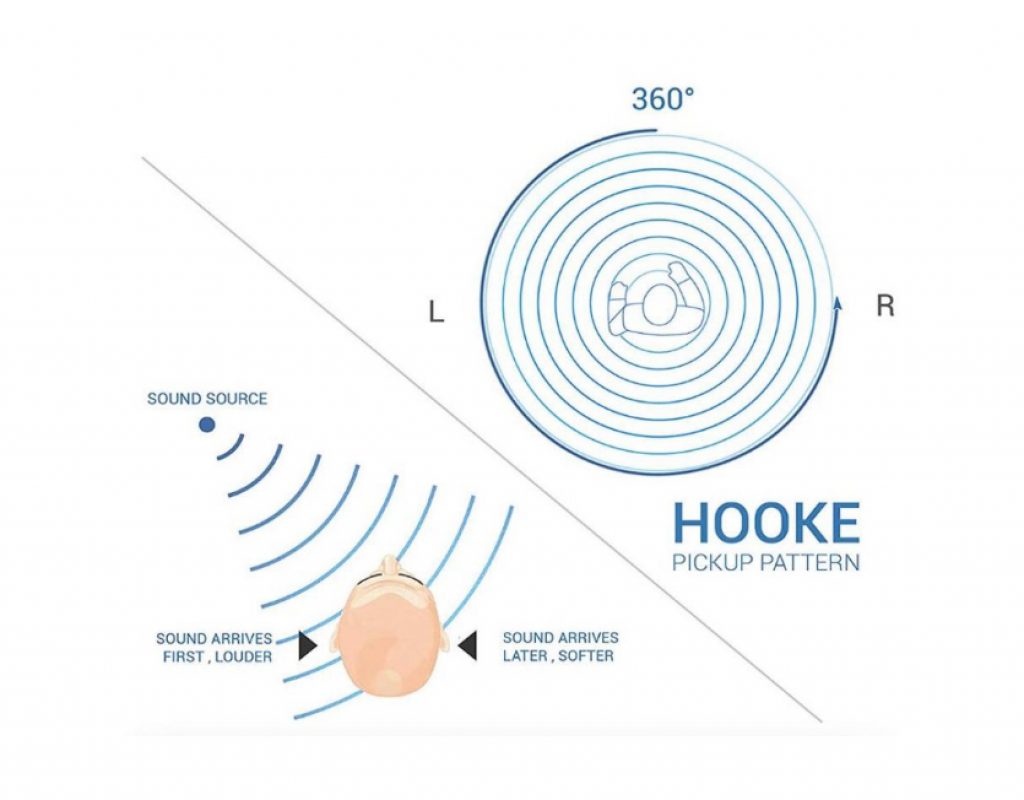Welcome to the world of 3D binaural sound, thanks to Hooke Audio, which graciously offered me the opportunity to review its Hooke Verse hardware and software. 3D binaural audio goes beyond stereo to 360 degree space. It’s a whole new world for those who have never tried it. Hooke Verse works perfectly with Android/iOS, as well as macOS, Windows and more. This is thanks to the proprietary Hooke Audio Bluetooth códec and exclusive 48 kHz recording, with very low latency. The Hooke Verse hardware is also compatible with camcorders and recorders which have an analog audio input. Ahead, I’ll clarify 3D binaural audio recording, the ideal ways to hear it (stereo headphones, stereo earbuds or other special playback equipment), and what is sacrificed when not heard ideally. Then I’ll review the Hooke Verse hardware and software (alone or with an app like FiLMiC Pro), and explain how it can also be used directly with standalone camcorders and recorders. Of course, you’ll hear audio recordings too.
Clarifying 3D binaural audio recording
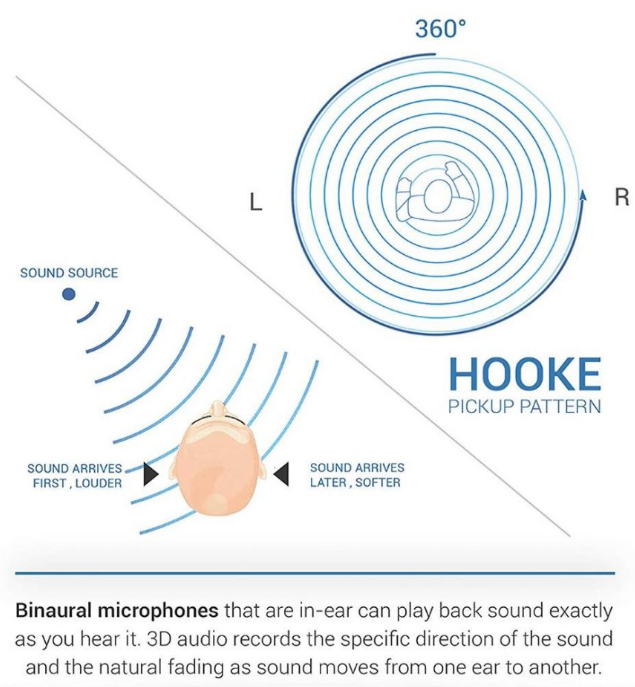
A 3D binaural audio recording is done with a pair of omnidirectional microphones mounted either on human ears or on a mannequin head’s ears, which simulate human ears. When making the recording that way (and later playing back the final recording in one of the ideal ways explained ahead), a full 3D 360-degree experience is achieved: not just left and right, as with conventional stereo. That said, the actual recording format is a standard stereo WAV file. What gives it the special sauce that makes it 3D binaural is the proper encoding and ideal decoding of that standard stereo file.
I’ll also clarify that 3D binaural audio recording is not new. In fact, it goes back to the palindromic year of 1881. Other manufacturers, including 3Dio, Brüel & Kjær, Core Sound, G.R.A.S., Neumann, Sound.Codes, Sound Professionals and ZiBionic have been doing 3D binaural audio for a very long time.
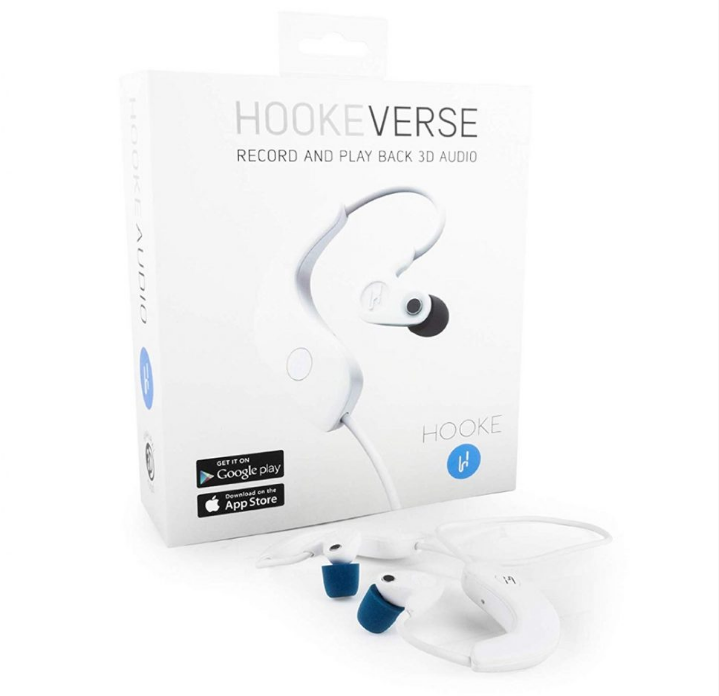
Now, Hooke Audio’s Hooke Verse (currently US$159, Amazon — B&H) has simplified and democratized 3D binaural audio recording with its proprietary, low latency códec, which is so low (.0042ms) that it can even work when combined with video recording, be it with the free Hooke Audio Binaural 3D Audio app on an Android or iOS device, or when connecting the Hooke Verse microphones via the included DAC (digital audio converter) to a consumer or professional camcorder, including action cams, HDSLR or mirrorless camcorders, which are growing in popularity. Ahead I’ll also cover how to combine Hooke Verse with professional apps like FiLMiC Pro.
The ideal ways to hear 3D binaural audio
The ideal ways to listen to 3D binaural audio are via standard headphones or earbuds. The exception I learned from Hooke Audio are special listening environments, carefully designed by employing expensive crosstalk cancellation equipment. The company cites Edgar Choueiri’s brilliant BACCH System or the Yarra 3DX speaker.
What is sacrificed if 3D binaural audio is heard via standard stereo speakers?
If you (or your listeners/viewers) play back your pristine 3D binaural audio via standard stereo speakers, it will be instantly downgraded to standard stereo. That’s not terrible, but it’s light years away from being 3D binaural audio, as you’ll hear ahead. In any case, it’s good to know that it is backwards compatible.
About the Hooke Verse hardware, proprietary códec and software
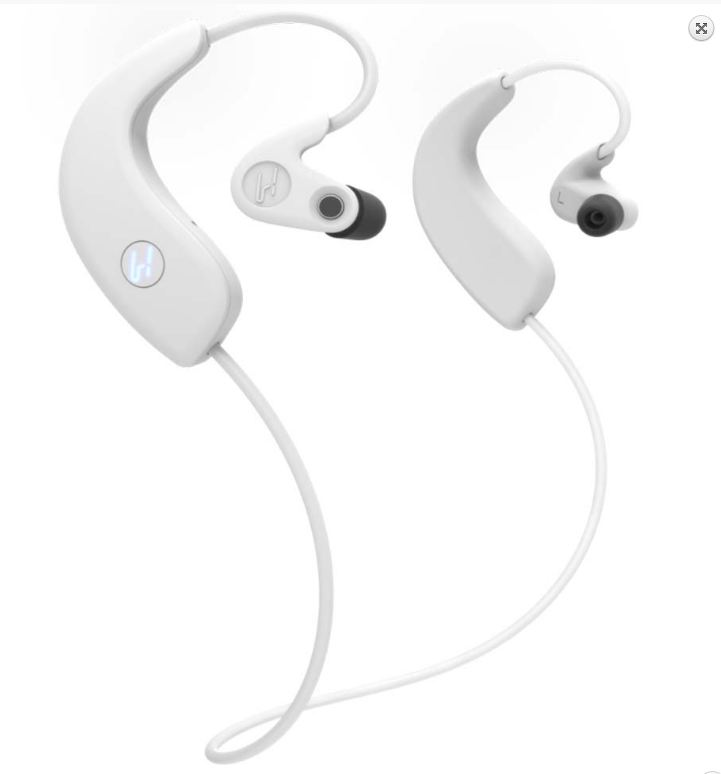
The basic Hooke Verse headset combines a pair of joined omnidirectional microphones, preamps, 48 kHz A-to-D (analog to digital) converter, in-ear headphones and a Bluetooth 4.1 transceiver with rechargeable internal battery.
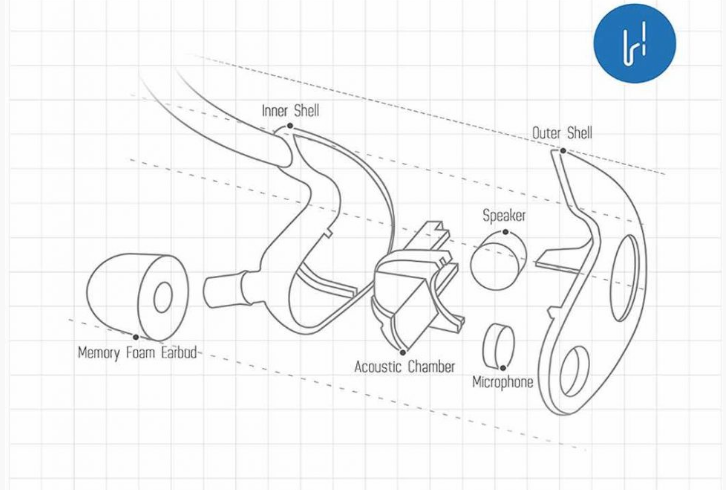
The electret condenser microphones are rated at 20HZ – 20 hHz frequency response, a sensitivity of -32SB+/-2dB with a maximum SPL of 125 dB SPLE (THD=105%). The headphones are rated at 20 Hz – 16 kHz. The battery is rated at 8-9 continuous recording or 9-10 hours playback.
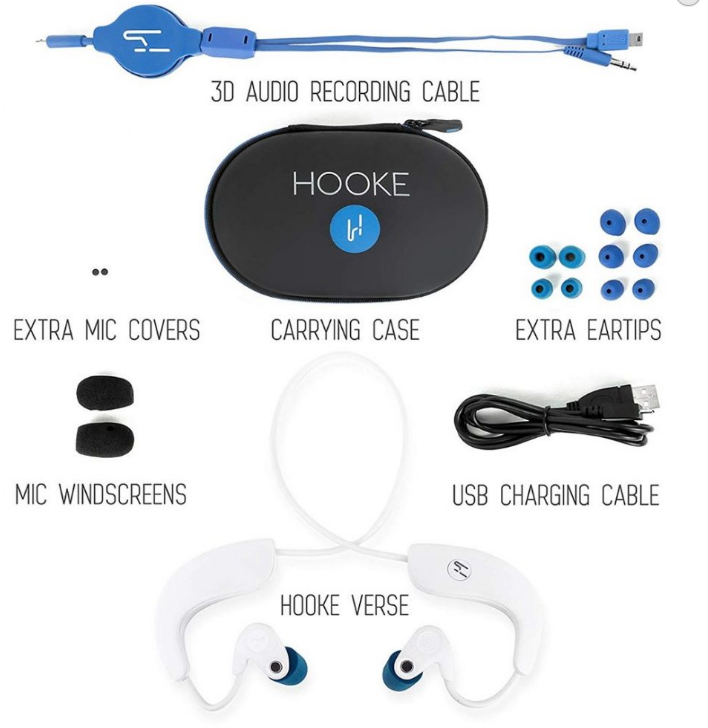
In addition to the Hooke Verse headset, the included accessories include:
- External D-to-A (digital-to-analog) converter (whose name they have simplified as “3D Audio Recording Cable”), with takes the digital signal out of the live digital output of the headset and delivers it as an analog signal over a TRS 3.5 mm plug.
- Carrying case
- Extra mic covers
- Extra ear tips
- Mic windscreens (although sadly, I haven’t yet figured out how to attach them)
Initial test recording
Remember to listen with your stereo headphones or earbuds, or you will not hear it in 3D. Also, please use unmetered data, since this is an uncompressed WAV file at 48 kHz:
Audio PlayerIn the above recording, you will hear:
- Me unzipping and zip my backpack.
- Me unlocking, open the door, close the door, keys rattling and lock.
- Lots of car traffic while I wait for my Uber, and some very loud motorcycle traffic.
- Me getting into the rear seat of an Uber Pool (shared right). You’ll hear my voice and the Uber driver’s voice, who had no idea I was recording audio. He had nice jazz playing on the car stereo.
- Occasional notifications on the driver’s smartphone.
What will I do the next time I record:
- Lower the recording level slightly, to avoid occasional clipping.
- Figure out how to attach the included windscreens, which is still not clear to me.
I did this in time for the Hooke Audio’s deadline for the review.
Can we use Hooke Verse with FilMiC Pro and similar apps?
Yes and no: I hope that third party video apps like FiLMiC Pro will soon start to support the Hooke Audio códec directly. Hooke Audio has offered it to FiLMiC Pro, but according to Hooke, there has been no acceptance so far. There are indeed workarounds to make Hooke Verse work with FiLMiC Pro and similar apps, indirectly here, both wirelessly (requires a post-sync, since it is essentially dual system audio recording which can be recorded on the same mobile device) and wired.
Note: the linked page seems to have an important typo that indicates that Hooke Verse works at 44.1 kHz, but in my testing, Hooke Verse and its app indeed use the proper 48 kHz exclusively.
Image credits
Most of the images in this article are courtesy of Hooke Audio.
Initial conclusions
Although I had heard about 3D binaural audio before, I had never paid much attention until now. I am blown away by the experience and with how Hooke Audio and Hooke Verse (Amazon — B&H) have simplified and democratized 3D binaural audio, plus audio with video. I am so glad that they were smart enough to use 48 kHz exclusively, and I hope to induct them into the 48 kHz Alliance soon. I also applaud the impressive packaging of the Hooke Verse.
(Re-)Subscribe for upcoming articles, reviews, radio shows, books and seminars/webinars
Stand by for upcoming articles, reviews, and books. Sign up to my free mailing list by clicking here. If you previously subscribed to my bulletins and no longer receive them, you must re-subscribe due to new compliance to GDPR. Most of my current books are at books.AllanTepper.com, and my personal website is AllanTepper.com. Also visit radio.AllanTepper.com.
Si deseas suscribirte (o volver a suscribirte) a mi lista en castellano, visita aquí. Si prefieres, puedes suscribirte a ambas listas (castellano e inglés).
Suscribe to his BeyondPodcasting show at BeyondPodasting.com.
Subscribe to his Tu radio global show at Turadioglobal.com.
Subscribe to his award-winning CapicúaFM show at CapicúaFM.com.
FTC disclosure
No manufacturer is specifically paying Allan Tépper or TecnoTur LLC to write this article or the mentioned books. Some of the other manufacturers listed above have contracted Tépper and/or TecnoTur LLC to carry out consulting and/or translations/localizations/transcreations. Many of the manufacturers listed above have sent Allan Tépper review units, including Hooke Audio. So far, none of the manufacturers listed above is/are sponsors of the TecnoTur , BeyondPodcasting CapicúaFM or TuRadioGlobal programs, although they are welcome to do so, and some are, may be (or may have been) sponsors of ProVideo Coalition magazine. Some links to third parties listed in this article and/or on this web page may indirectly benefit TecnoTur LLC via affiliate programs. Allan Tépper’s opinions are his own. Allan Tépper is not liable for misuse or misunderstanding of information he shares.
Copyright and use of this article
The articles contained in the TecnoTur channel in ProVideo Coalition magazine are copyright Allan Tépper/TecnoTur LLC, except where otherwise attributed. Unauthorized use is prohibited without prior approval, except for short quotes which link back to this page, which are encouraged!

Filmtools
Filmmakers go-to destination for pre-production, production & post production equipment!
Shop Now